Experts now refer to the process of starting to feed baby solid foods as “complementary feeding” rather than “weaning”, because mothers are encouraged to continue breastfeeding up to two years of age after baby begins eating solids. This eases baby into the transition and offers her the benefits of breast milk for a longer time.
Nobody can put a finger on the definitive “right” time to start infants on complementary feeding. Every child is unique. Some may be ready before their fourth month begins; some can wait another two months.
However, it is best that you begin complementary feeding by baby’s sixth month because delaying it further may cause her to adapt more slowly to new foods. Also, as she grows, her nutritional needs increase and breast milk will only be able to provide some of what she needs.
If baby has been crying after a few successive feedings, she may not be just plain fussy – she could be trying to tell you that she’s still hungry. Other signals that baby is ready for complementary feeding are:
- Baby can hold her head up
- Baby can sit up, supported by your arm or a chair back
- Baby makes “munching” motions when there’s nothing in her mouth
- Baby likes bringing her hands and toys to her mouth
- Baby has been feeding frequently but hasn’t been gaining weight, or the rate of weight gain has significantly slowed
Baby’s First Foods
In Malaysia, the ubiquitous baby “starting food” is rice porridge. This is a good choice for starting complementary feeding, because rice very rarely causes allergy, unlike other cereals such as wheat. Begin cultivating a taste for fresh fruits and vegetables by feeding them to her in puree form. This way, she’ll come to recognise the different tastes and grow used to eating a variety of fresh produce. It’s best to let her get used to, and like, vegetables before introducing fruits, as she might reject the more ‘tasteless’ vegetables if she’s been used to eating only sweet fruits before.
Foods to try: Rice and barley porridge; beans and lentils; potato; fresh fruit; fresh vegetables.
Technique for pureeing:
- Cut fruit or vegetable into small cubes.
- Steam fruit or vegetable pieces to soften. (If using soft fruits such as banana and papaya, skip this step).
- Use blender, kitchen masher or grater to turn food to pulp.
- Add water or breast milk to make runny, almost liquid mixture.
A small amount of food is sufficient when you’re starting baby on complementary foods. The first few times, your aim is to get baby accustomed to eating in this new way, so don’t prepare a huge bowl only to throw most of it away in disappointment.
Give baby a feed of breast milk first, then before you think she’s full, burp her and place her in a sitting position. Put a small amount of her food on the tip of a clean plastic spoon and place it at her lips. Let her suck it off. If she can bring it to the back of her mouth and swallow, give her two or three more spoonfuls.
You can try feeding baby liquids such as strained vegetable soup and barley water at the same time. If you want baby to drink juice, make it yourself and use a strainer to remove all the pulp. Whether giving her juice or soup, don’t add condiments such as salt or sugar. Let her acquire a taste for the natural flavours of these foods.
Honey Trap
According to local folklore, giving a crying baby a drink of diluted honey will “sweeten” her disposition. It might, but it will also expose her to health risks that are not worth taking. First of all, adding sweetness to food is not only unnecessary but promotes gum and tooth disease (when teeth come in). Second, honey may contain spores of a germ that will wreak havoc on baby’s digestive tract. Third, adding to the natural sweetness of food will give baby a “sweet tooth”, one of the potential causes of poor nutrition, tooth and gum problems and obesity later in life.
Baby Food Safety
She may be getting into the swing of solids now, but she won’t be ready to join you for hawker food just yet. To protect baby’s sensitive system, make sure the foods you give her are clean, nutritionally appropriate and properly prepared.
- Wash rice, fruits and vegetables well before preparing. This is especially important for foods that will be given raw.
- Don’t feed baby raw or partially cooked meat, fish, seafood or eggs.
- Set aside a bowl and spoon just for baby. Contaminants from other family members’ food won’t be likely to get into her food then.
- Until her sixth month, give her foods that are almost liquid in consistency. Even the tiniest lump might cause her to choke or gag.
- Don’t feed baby anything that has come in contact with your mouth. If the food is too hot, let it cool by itself; don’t blow on it and don’t put it in your own mouth to cool!
- Avoid giving baby commercial processed baby food. If you’re travelling and need the convenience of commercial food, make sure it contains 100% natural ingredients and doesn’t have any sugar or salt in it.
- If you’re feeding baby commercial food straight from the jar, discard the remainder after she finishes. The food would have become contaminated through contact with the spoon.
- Don’t feed baby any egg until she’s at least six months old, and even then, feed her only the yolk.
- Although veggies are good for you, some of them are not appropriate for baby before her first birthday. These include spinach, turnip, beetroot, and sour fruits such as pineapple and lime.


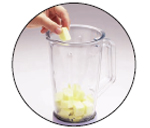

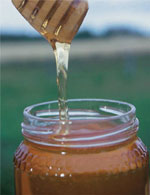
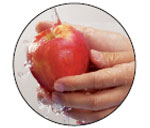
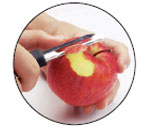

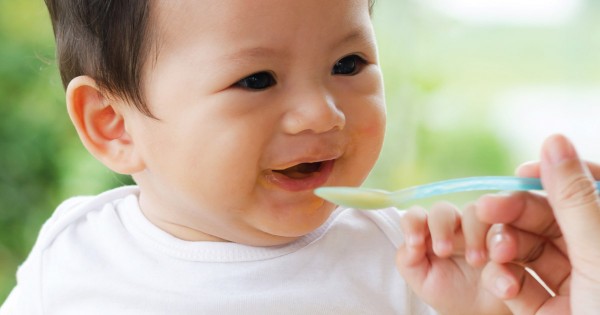


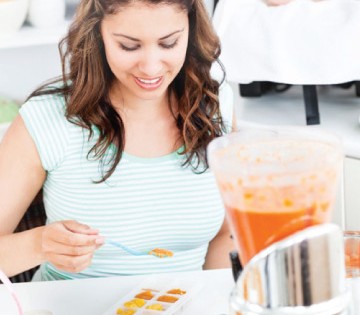
Comments